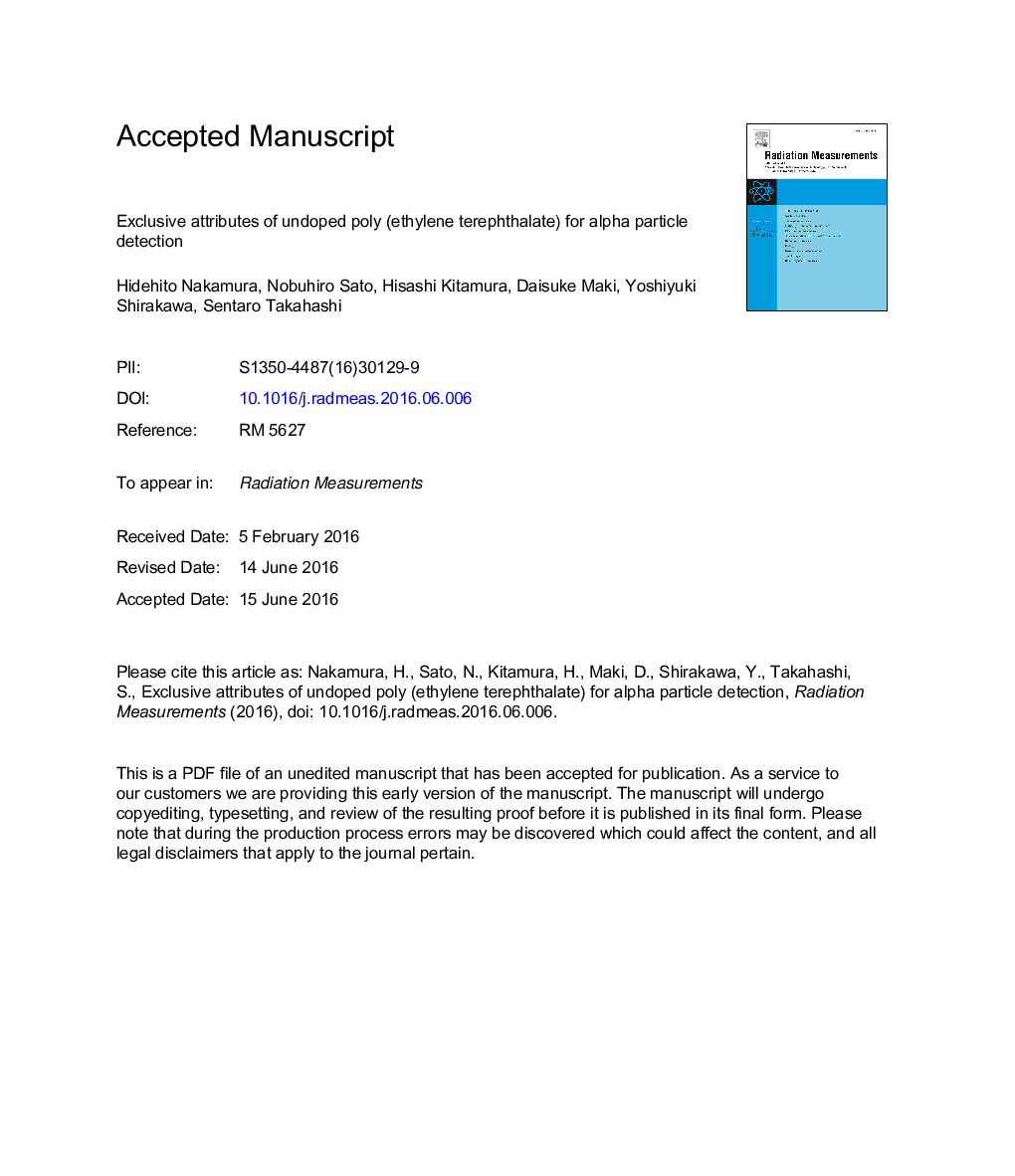| Article ID | Journal | Published Year | Pages | File Type |
|---|---|---|---|---|
| 8250680 | Radiation Measurements | 2016 | 19 Pages |
Abstract
Poly (ethylene terephthalate) (PET) is available worldwide and has a broad range of applications. However, its basic properties as a scintillation material that is undoped with fluorescent guest molecules are not completely known. Here, we optically characterise undoped PET for use in radiation detection. Light absorption is primarily below 350Â nm, with an emission maximum at 385Â nm. An effective refractive index, determined from the emission spectrum and the wavelength dependence of the refractive index, is 1.62, which is greater than that for the sodium D line (NDÂ =Â 1.57). The density of PET is 1.33Â g/cm3, and its stopping power for 1-MeV electrons is 1.72Â MeVÂ cm2/g. Distinct peaks generated by alpha particles from 210Pb and 241Am radioactive sources appear in PET light-yield distributions. The PET response to 5-6-MeV alpha particles is approximately one-eighth that for electrons. These results demonstrate that undoped PET has special attributes for alpha particle detection. This knowledge will enable better performance of radiation equipment based on PET and its blends with other aromatic ring polymers.
Related Topics
Physical Sciences and Engineering
Physics and Astronomy
Radiation
Authors
Hidehito Nakamura, Nobuhiro Sato, Hisashi Kitamura, Daisuke Maki, Yoshiyuki Shirakawa, Sentaro Takahashi,
